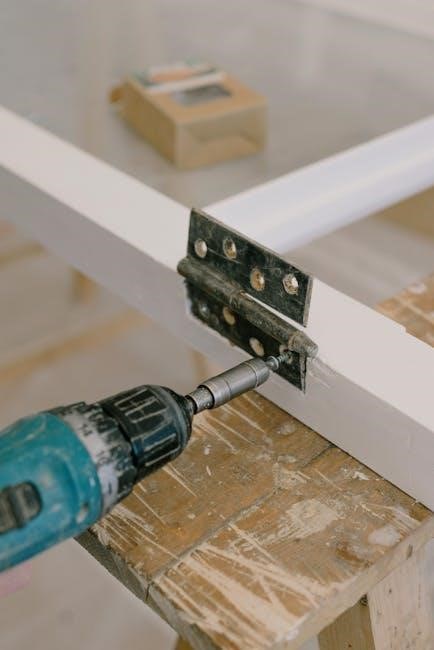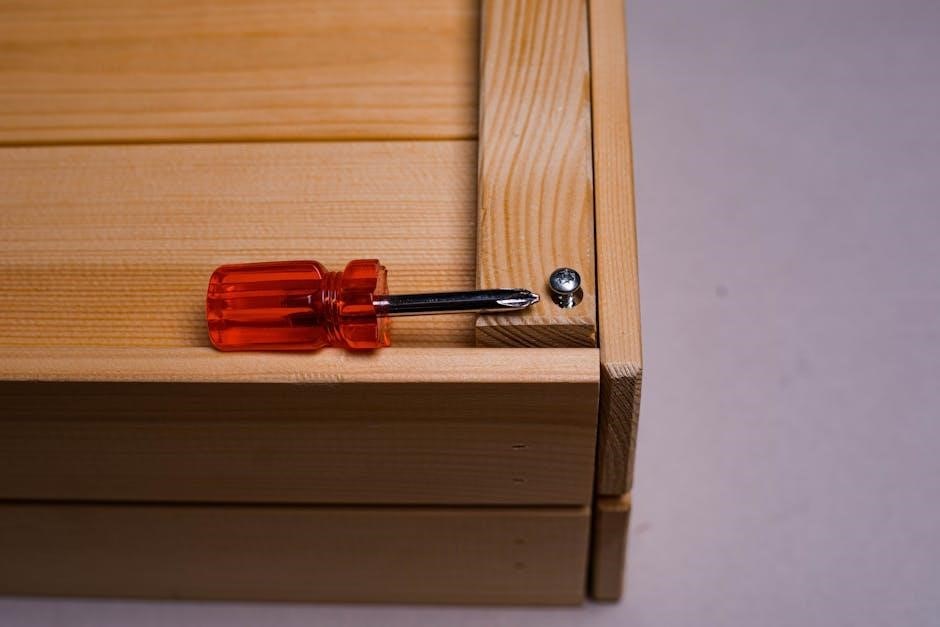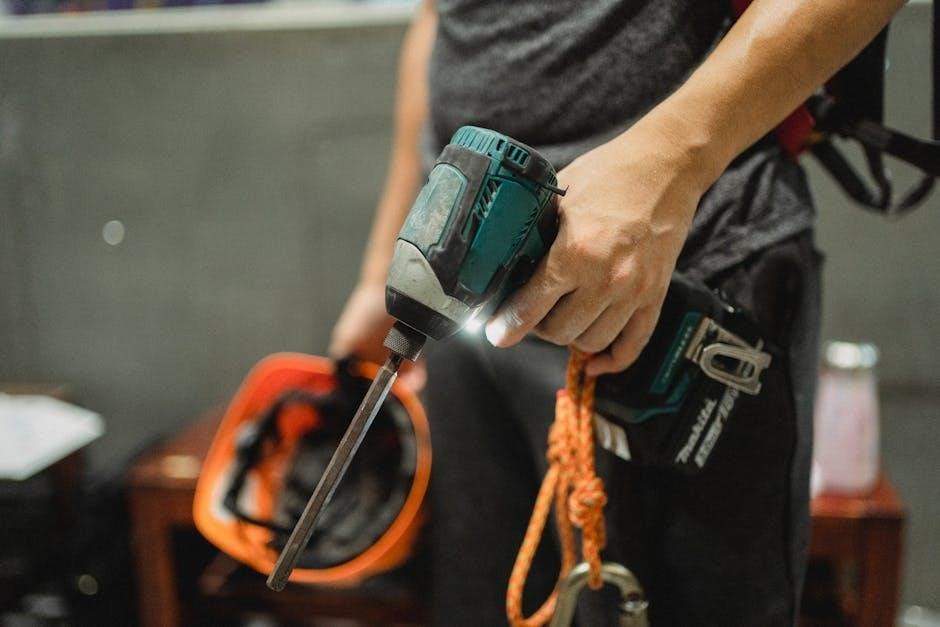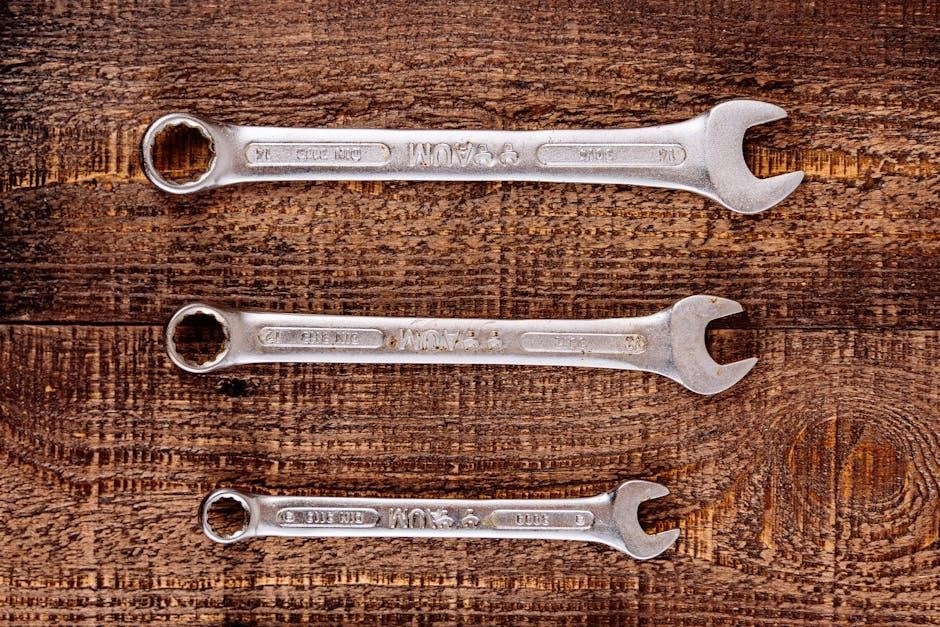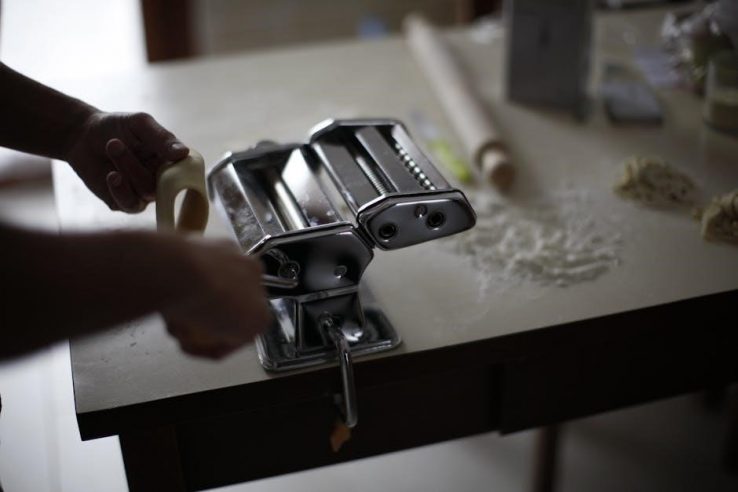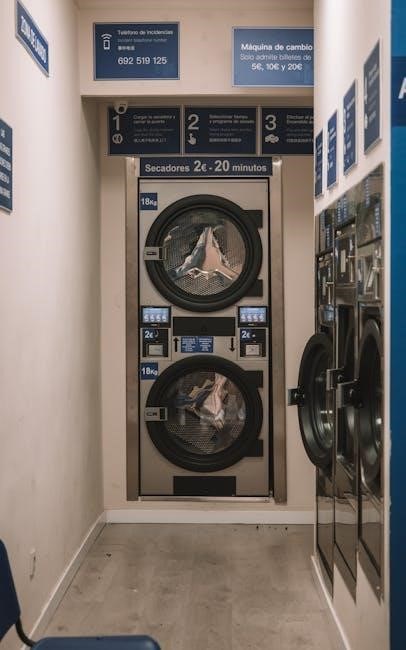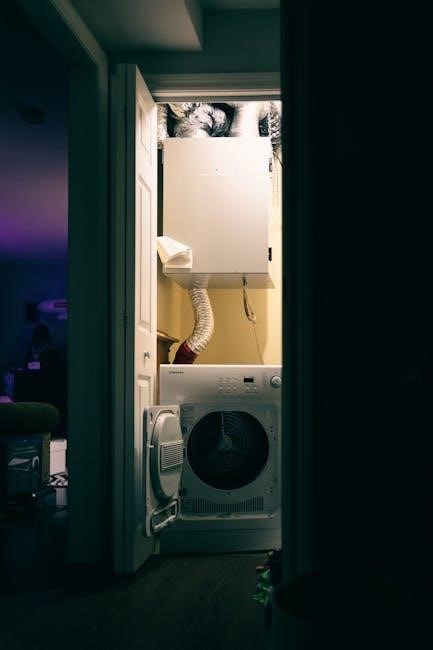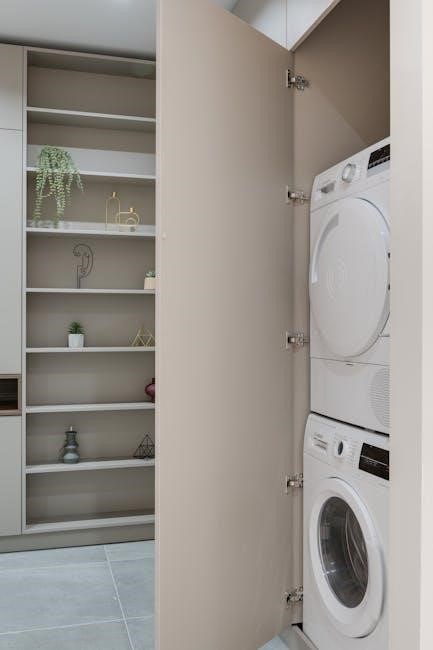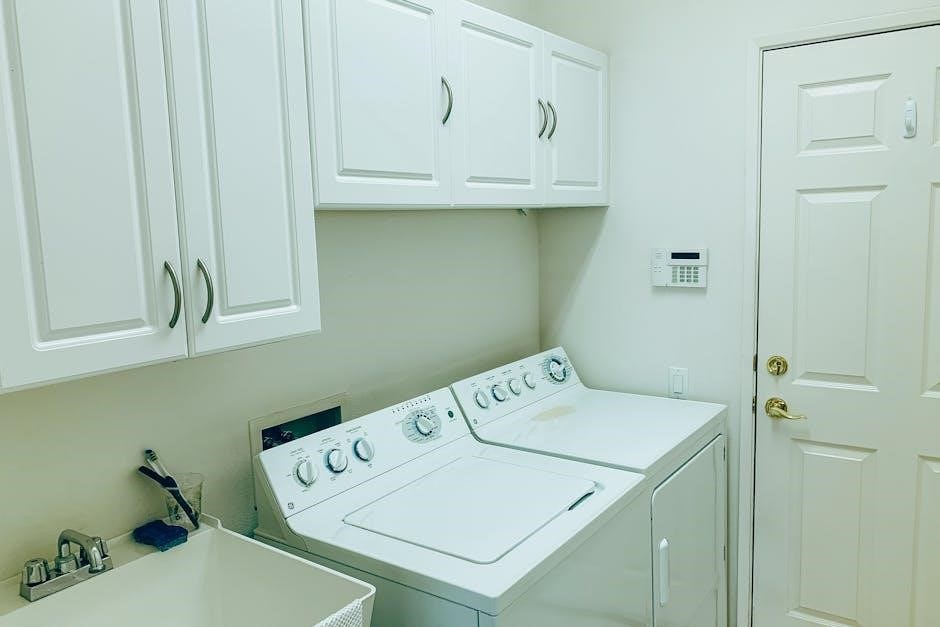This manual provides comprehensive guidance for installing, operating, and maintaining the Chamberlain 1/2 HP garage door opener, ensuring safety and optimal performance through detailed instructions.
1.1 Overview of the Chamberlain 1/2 HP Garage Door Opener
The Chamberlain 1/2 HP garage door opener is a reliable, chain-driven system designed for standard residential use. It features MyQ technology for smartphone control and Security 2.0 rolling codes for enhanced security. The manual provides step-by-step instructions for installation, operation, and maintenance, ensuring safe and efficient use. This model is ideal for homeowners seeking durability and advanced features in a compact design, making it a popular choice for everyday garage door operation.
1.2 Importance of Reading the Manual
Reading the Chamberlain 1/2 HP manual is crucial for safe and proper installation, operation, and maintenance. It provides detailed safety precautions, step-by-step instructions, and troubleshooting tips to ensure optimal performance. Understanding the manual helps prevent accidents, reduces repair costs, and extends the opener’s lifespan. Always fasten the manual near the garage door for easy reference and adhere to its guidelines to avoid potential hazards and ensure compliance with safety standards.

Safety Precautions and Warnings
Always follow safety symbols and signal words in the manual. Test the safety reversal system after installation and ensure proper alignment. Keep the manual accessible for future reference and perform periodic checks to ensure safe operation.
2.1 General Safety Guidelines
Always read the manual and understand safety symbols. Test the safety reversal system after installation and ensure proper alignment. Keep the manual near the garage door for easy access. Perform periodic checks to ensure safe operation and maintain the opener regularly. Manually operate the door monthly to check balance. Dispose of batteries properly and follow all precautions to avoid injuries or damage. Contact Chamberlain support for assistance if needed.
2.2 Understanding Safety Reversal System
The safety reversal system ensures the door reverses if it encounters an obstacle. Proper alignment of photo-eye sensors is crucial for this feature to function correctly. Misaligned sensors may disable the system, leading to potential accidents. Always test the system after installation and ensure the emergency release label is visible. Regularly check and maintain the sensors to guarantee safe operation and compliance with safety standards. This system is vital for preventing injuries and damage.
2.3 Proper Installation and Maintenance
Proper installation ensures safe and efficient operation. Secure the header bracket to structural supports and align sensors correctly. Regular maintenance includes checking belt or chain tension, lubricating moving parts, and ensuring all components function smoothly. Follow the manual for installation steps, such as connecting the door arm to the trolley and testing the safety reversal system. Always fasten the manual near the garage door for easy reference and adhere to periodic checks to maintain optimal performance and safety standards.

Installation Steps
Installation involves preparing tools, assembling the rail system, mounting the header bracket, and connecting the door arm to the trolley. Follow step-by-step instructions carefully for safety and proper function.
3.1 Preparing for Installation
Before starting, ensure the garage door is fully closed and secured. Check the door’s condition and balance. Gather all tools and parts, including the manual. Determine the header bracket location, ensuring it aligns with structural supports. Read the safety instructions carefully and prepare a clean workspace. Verify all components are included and undamaged. This preparation ensures a safe and correct installation process.
3.2 Assembling the Rail System
Begin by laying the rail sections on a flat surface. Attach the trolley and chain or belt to the rail, ensuring proper alignment. Pass approximately 12 inches (30 cm) of the chain or belt through the rail window. Secure all connections tightly but avoid over-tightening. Double-check the rail’s straightness and alignment to ensure smooth operation. Keep the area clear of obstructions during assembly for safety and ease of installation.
3.3 Mounting the Header Bracket
Determine the header bracket location on the wall or ceiling above the garage door, ensuring it aligns with the door’s center. Secure the bracket to structural supports using lag screws. Tighten all bolts firmly but avoid over-tightening. Ensure the bracket is level and properly aligned with the rail system. Refer to page 12 for detailed installation steps and safety precautions to guarantee a secure and stable mounting process.
3.4 Connecting the Door Arm to the Trolley
Attach the door arm to the garage door and the trolley, ensuring proper alignment. Secure the arm with the provided hardware, following the manufacturer’s torque specifications. After connecting, test the door’s movement to confirm smooth operation. Refer to page 12 for detailed steps and ensure all safety checks are completed before operating the door to avoid potential hazards or malfunctions during use.

Operating the Garage Door Opener
Operate your Chamberlain 1/2 HP opener using the control panel or remote control. Ensure proper alignment and function. For manual operation, use the emergency release.
4.1 Understanding the Control Panel
The control panel is the central interface for your Chamberlain 1/2 HP garage door opener. It features buttons for opening, closing, and stopping the door, as well as a light control. The panel also includes a learn button for syncing remote controls and adjusting settings. Familiarize yourself with its layout to ensure smooth operation. Refer to the manual for detailed button functions and troubleshooting tips.
4.2 Using the Remote Control
The remote control allows convenient operation of your Chamberlain 1/2 HP garage door opener. To use it, ensure it is properly synced with the opener using the learn button on the control panel. Press the button once to open or close the door. For models with MyQ technology, the remote also enables monitoring and control via a smartphone app. Replace the battery annually for optimal performance. Always test the door after syncing or reprogramming the remote.
4.3 Manual Operation and Emergency Release
To manually operate the garage door, engage the emergency release by pulling the cord or lever, disengaging the opener. Test the door’s balance by lifting it—ensure it moves smoothly. Always test the safety reversal system after manual operation. In emergencies, use the release mechanism to open the door manually. Keep the emergency release label visible for quick access. Regularly check the door’s balance for safe operation.
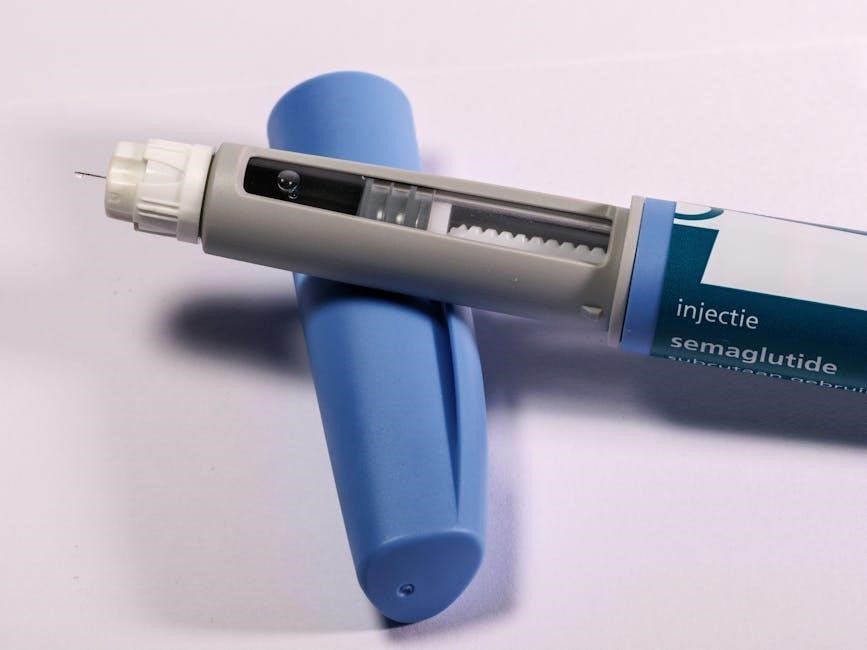
Maintenance and Troubleshooting
Regular maintenance ensures smooth operation. Check springs, rollers, and chains monthly; Lubricate moving parts and inspect the rail system for alignment and damage. Address issues promptly.
5.1 Monthly Maintenance Checks
Perform monthly checks to ensure optimal performance. Inspect the garage door opener’s chain or belt for wear and proper tension. Lubricate moving parts with silicone-based spray. Check the rail system for alignment and cleanliness. Test the safety reversal system by placing an object under the door. Verify all screws and bolts are tightened. Address any issues promptly to prevent major repairs.
5.2 Common Issues and Solutions
Common issues include the door not closing properly or the opener making loud noises. Check if the Protector System is connected and aligned. Lubricate moving parts annually. Test the safety reversal system monthly. If the opener is unresponsive, ensure the remote is programmed correctly. For MyQ compatibility issues, reset the internet gateway. Address chain or belt wear by tightening or replacing it. Regular maintenance prevents major repairs and ensures smooth operation.

Advanced Features and Compatibility
Chamberlain’s garage door opener supports MyQ® Technology for smartphone control and Security 2.0 for enhanced protection. Compatibility with various internet gateways ensures seamless integration and advanced functionality.
6.1 MyQ Technology and Internet Gateway
Chamberlain’s MyQ® Technology enables remote monitoring and control of your garage door via a smartphone app. Requires an internet gateway for connectivity, this feature enhances convenience and security. Receive notifications and manage access from anywhere, ensuring your garage door is always monitored. The gateway is sold separately and easily integrates with the opener, providing a seamless smart home experience.
6.2 Security 2.0 and Learn Button
Chamberlain’s Security 2.0 system enhances garage door opener security with rolling code technology, preventing unauthorized access. The Learn Button simplifies remote and sensor setup, ensuring compatibility with MyQ-enabled devices. This feature streamlines programming and strengthens security, protecting your home with advanced encryption and easy integration for a safer, smarter garage door operation experience.

Parts and Accessories
Explore the comprehensive parts diagram for easy identification of components. Find replacement parts and accessories, such as remotes and keyless entries, to enhance functionality and maintain performance.
7.1 Understanding the Parts Diagram
The parts diagram provides a detailed visual representation of all components, including the motor, rail system, trolley, and hardware. It helps in identifying each part’s location and function, making installation and maintenance easier. Referencing this diagram ensures accurate assembly and troubleshooting. Always cross-check with the manual for specific instructions on handling each component to avoid errors and ensure safety during repairs or replacements.
7.2 Replacing and Upgrading Components

Replacing worn or damaged parts is essential for maintaining optimal performance. Use genuine Chamberlain components to ensure compatibility and safety. Refer to the parts diagram for accurate identification. Upgrades like MyQ Technology or Security 2.0 can enhance functionality. Always follow manual instructions for replacements and upgrades. Use appropriate tools like wrenches or screwdrivers. For complex upgrades, consult the manual or contact Chamberlain support for assistance.
Adhering to this manual ensures safe and efficient operation of your Chamberlain 1/2 HP garage door opener. Regular maintenance and proper installation are key to optimal performance.
8.1 Final Tips for Optimal Performance
Regularly test the safety reversal system and ensure proper alignment of sensors. Perform monthly door balance checks and lubricate moving parts. Replace the battery in your remote annually and store the manual for quick reference. For troubleshooting, refer to the manual or contact Chamberlain support. Proper maintenance ensures smooth operation and extends the opener’s lifespan.

Additional Resources
Download the full Chamberlain 1/2 HP manual for detailed instructions. Contact Chamberlain support for assistance or replacement parts. Visit their official website for additional resources and guides.
9.1 Downloading the Full Manual
The Chamberlain 1/2 HP garage door opener manual is available for download on the official Chamberlain website. Simply visit their support page, enter your model number, and access the PDF version. This manual includes detailed installation instructions, troubleshooting guides, and maintenance tips. Ensure you download the correct version for your specific model to get accurate information. The manual also covers advanced features like MyQ Technology and Security 2.0 for enhanced functionality and security.
9.2 Contacting Chamberlain Support
For assistance with your Chamberlain 1/2 HP garage door opener, contact their support team directly. Visit their official website and navigate to the support section for contact details. You can reach them via phone, email, or live chat. Additionally, the Parts Finder tool on their website helps locate specific components. Chamberlain’s headquarters is located at 845 Larch Avenue, Elmhurst, Illinois, 60126-1196, and their support resources are available to address any queries or concerns about your garage door opener.






